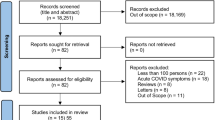Abstract
Data sources A search of electronic databases (EMBASE, MEDLINE, Cochrane Oral Group Trials Register and the Cochrane Central Register of Controlled Trials) along with a manual search of various Science Citation Indexed journals.
Study selection Four cross-sectional studies and one case-control study were included where percentage levels of Herpes Simplex Virus Type 1 (HSV1), Epstein-Barr Virus (EBV) and Cytomegalovirus (CMV) were sampled for in both peri-implantitis affected and healthy implant sites, with the latter used as the control. Studies were excluded that investigated any other infective agent, had fewer than ten participants, was performed in vitro or involved subjects with only periodontal disease.
Data extraction and synthesis Data extraction followed the Preferred Reporting Items for Systematic Review and Meta-analysis (PRISMA) guideline process. Two examiners used the Newcastle Ottawa Scale to determine overall study quality while the key information was extracted and tabulated for comparison. The data was analysed using Chi-squared test and I2 test for heterogenicity with a random effects or fixed affect models applied as appropriate. Risk difference of outcomes was displayed via a forest plot with 95% confidence intervals. Funnel plots were generated to evaluate publication bias.
Results All four cross-sectional studies searched for EBV, while three also looked for CMV. The case-control study included investigated for HSV1 presence only. EBV presence in peri-implantitis sites was found to be statistically significant in three of the four studies despite obvious heterogeneity. CMV presence at peri-implantitis sites was statistically significant in all relevant studies, but the data displayed notable heterogeneity so as to render it insignificant. HSV1 exhibited similar percentage frequency in both healthy and diseased implant sites.
Conclusions Virus prevalence was found to be increased in patients with peri-implantitis when compared to healthy sites but this assertion must be treated with caution as the data supporting it is weak due to the limited number of studies involved and the significant inherent heterogeneity they displayed.
This is a preview of subscription content, access via your institution
Access options
Subscribe to this journal
Receive 4 print issues and online access
$259.00 per year
only $64.75 per issue
Buy this article
- Purchase on Springer Link
- Instant access to full article PDF
Prices may be subject to local taxes which are calculated during checkout
Similar content being viewed by others
References:
Klinge B, Klinge A, Bertl K, Stavropoulos A. Peri-implant diseases. Eur J Oral Sci 2018; 126: 88-94.
Cekici A, Kantarci A, Hasturk H, Van Dyke T E. Inflammatory and immune pathways in the pathogenesis of periodontal disease. Periodontology 2000 2014; 64: 57-80.
Slots J. Periodontal Herpesviruses; prevalence, pathogenicity, systemic risk; Periodontology 2000 2015; 69: 28-45.
Author information
Authors and Affiliations
Rights and permissions
About this article
Cite this article
Brown, T., Young, L. & Lamont, T. Do viruses play a role in peri-implantitis?. Evid Based Dent 21, 8–9 (2020). https://doi.org/10.1038/s41432-020-0072-z
Published:
Issue Date:
DOI: https://doi.org/10.1038/s41432-020-0072-z



